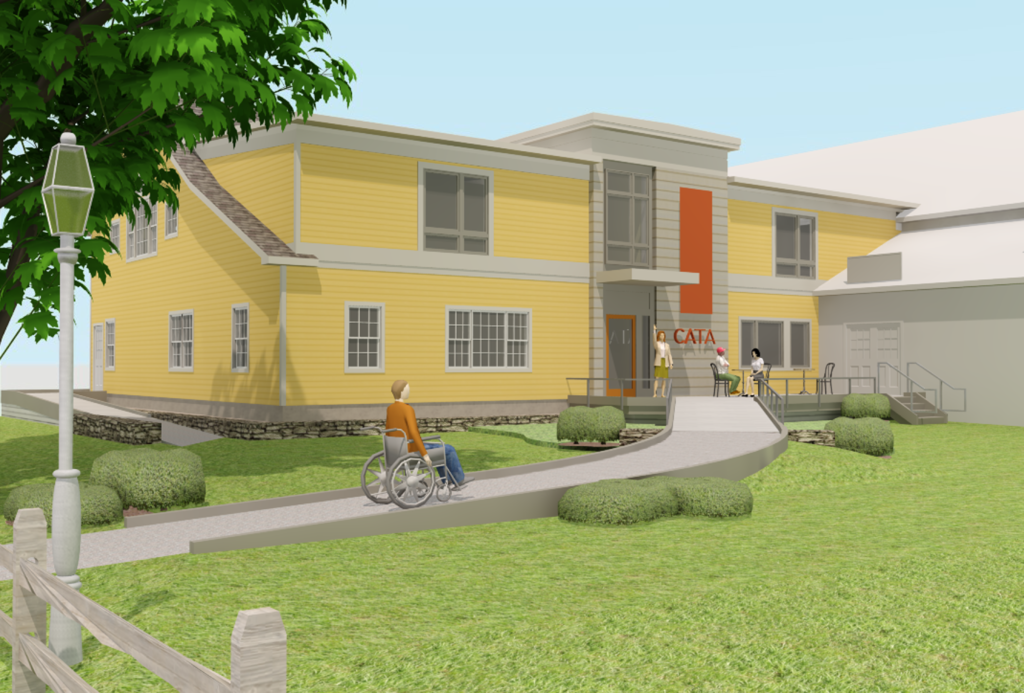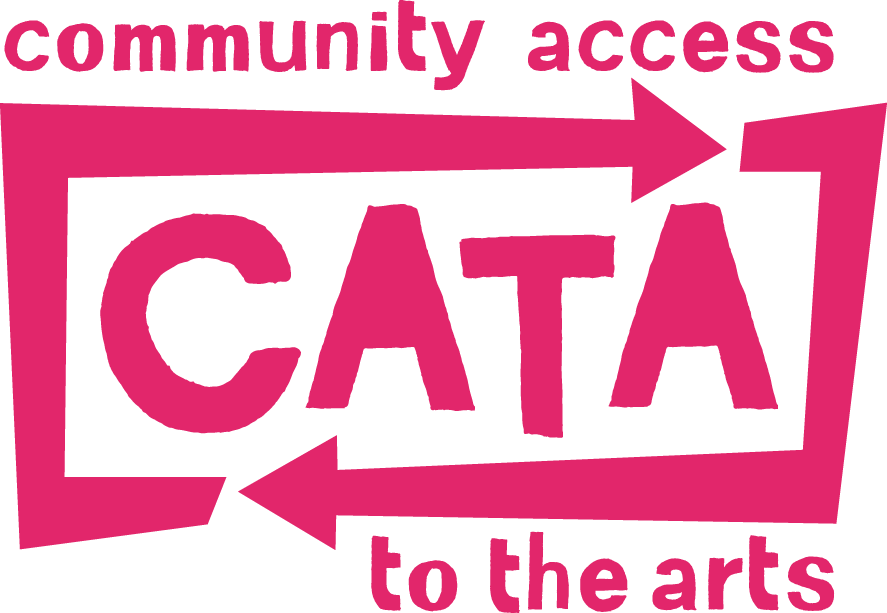01 Jul BERKSHIRE MAGAZINE: CATA is moving to a bigger, brighter, more complete space
July 1, 2019 —

By Evelyn Battaglia, BERKSHIRE MAGAZINE
Clearly, CATA is having a banner year—its 26th as an inimitable, impactful bridge connecting the cultural world and disabled community. On the heels of receiving a boost from Mass Cultural Council and being presented the Excellence in Collaboration award by the Massachusetts Nonprofit Network, Community Access to the Arts held a groundbreaking ceremony at the site of its future home.
“CATA is doing amazing things for people with special abilities,” says Berkshire District Representative William “Smitty” Pignatelli, an ardent and outspoken champion, locally and on Beacon Hill.
For Margaret Keller, CATA’s executive director, such achievements are the result of a tremendous growth spurt.
“In the past five years, we have increased the number of participants by 70 percent and program partners by over 50 percent, and we have more than tripled our regular programs to seven school districts,” says Keller, who took over the helm from founder Sarah Newman in 2014 after a four-year transition. That translates to 800 people with disabilities (the ever-inspiring CATA artists) participating in some 1,500 multi-week workshops each year in more than a dozen art forms, all of which have been led by 25 professional “faculty artists.”
Ever lean, CATA has been coordinated by a staff of seven working out of a shared rental space in downtown Great Barrington, reached by a flight of stairs, with a separate workshop studio in an adjacent building.
As Keller puts it, “We knew we needed more space, we knew we needed better space, and we knew our artists deserved better. That became our mantra.”
Such was the impetus for CATA’s “Forward Campaign,” its first-ever investment initiative. While still in the quiet phase, a lead gift made it possible to purchase outright the former Renaissance Art School at 420 Stockbridge Road (in Jennifer Commons)—favored for its raw square footage, ample parking, and convenient access on the bus route—so planning for renovations could begin.
Meanwhile, CATA had applied for a capital Cultural Facilities Fund (CFF) grant and was awarded the maximum amount for 2019. “As a competitive statewide grant, the CFF is an incredible accomplishment for CATA,” says Anita Walker, executive director of the Mass Cultural Council, which administers the fund in conjunction with Mass Development. “It’s not an easy application process.”
As with all grants, there’s a mountain of paperwork to complete, but the CFF also requires applicants to match the funds dollar for dollar—and ultimately to spend money first before drawing down on the funds.
“This $200,000 grant pushed us past the $2 million mark in terms of pledges and gifts in reaching our $3.2 million goal,” says Keller.
“That level of endorsement from a respected source will do so much for our exposure and shows that we resonate beyond the Berkshires,” adds program & artistic director Dawn Lane, a 25-year veteran of CATA. “It’s also important for the surrounding community to see an organization like CATA take hold and be a voice of advocacy for our artists.”
Keller credits the CFF as being instrumental early on through its lesser known feasibility grant, which funded CATA’s intensive outreach to community leaders, donors, and 47 program partners back in January 2018. “We love it when applicants do their due diligence and see if an idea is actually going to work,” says Walker.
“As an organization with 75 percent of its annual budget covered by contributed income, largely from individual donors, we must be stewards of those relationships and those funds,” says Keller. “This is not a move that we take lightly.”
CATA expects to relocate by early 2020. (See page 55 in On the Town for the groundbreaking event.) Once all the interior walls come down so other renovations can begin, the new space will more than double their current one to 6,400 square feet and feature two studios—one downstairs dedicated to visual arts and creative writing and another upstairs for dance and performing arts, with sprung floors so dance workshops can be held on-site for the first time. That the headquarters will also be under the same roof means that artists, faculty, and staff can be one cohesive, integrated family.
Most importantly for Keller and Lane, the new home will be inclusive to all. “We are going beyond being ADA-compliant to fully embracing the tenets of Universal Design in providing equal access to everyone,” says Keller. Instead of having steps and a ramp leading to separate doors, there will be a sweeping path through a lovely courtyard leading to a single entrance; an elevator just inside will deliver people to the second floor.
“We push our artists in incredible ways to think seriously about themselves as creators within a safe, supporting environment where people want you to succeed. That’s critical to who we are and what we do.”


